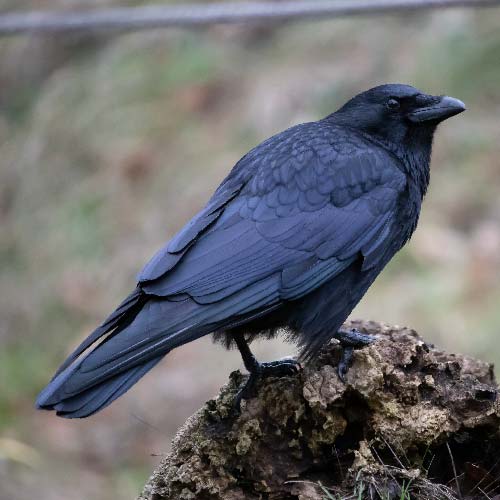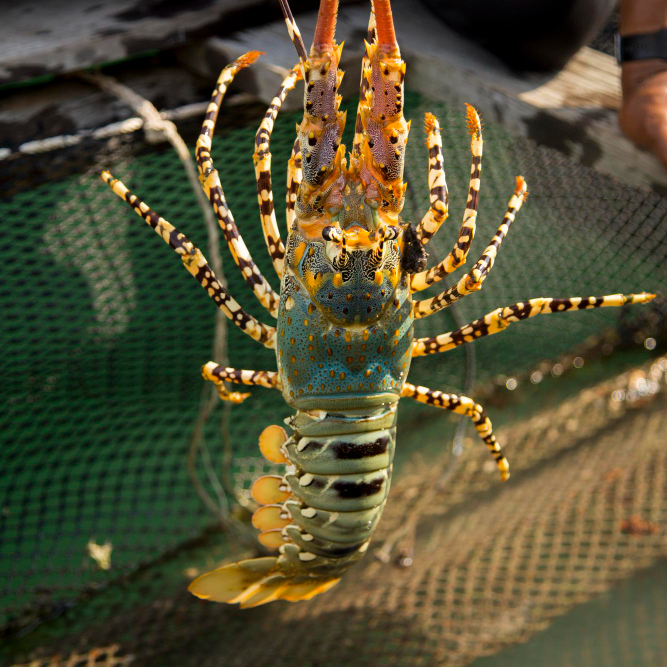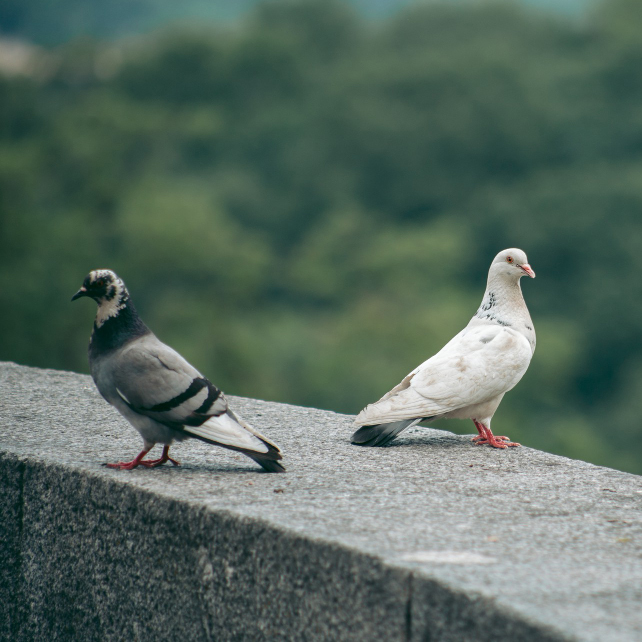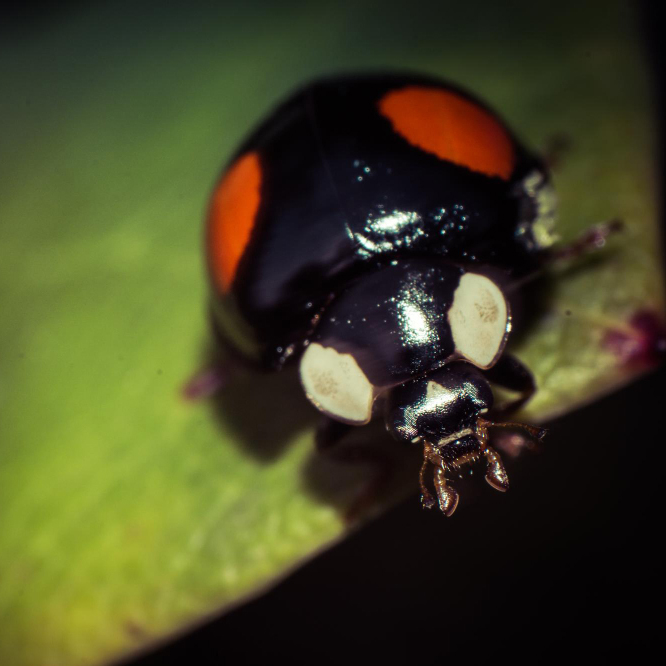Crows are highly intelligent and social birds that have long been associated with myths and symbolism. If you’ve noticed a group of crows gathering around your house, you may be wondering what it means. In this article, we will explore the possible meanings behind this behavior and delve into the fascinating world of crow behavior and folklore.
Why Do Crows Gather in Large Numbers?
While the gathering might be entertaining to some, it could be seen as a nuisance to others, especially if you live in a rural area where crows are known to roost in large numbers. Large numbers of crows can create a lot of noise and many people are afraid that the birds will destroy their gardens and local vegetation.
However, crows gather in large numbers for two main reasons:
To Roost:
This is perhaps the most common reason why crows will gather in large numbers. The term “roost” refers to any place where crows and other birds congregate en masse to sleep. These places are usually large, natural spots like trees, and it is not uncommon to see thousands of birds stopover for the night.
To Eat:
Crows gather around food sources, which can be natural or artificial. They have been known to gather in landfills and other dumping sites, as well as foraging for food in fields. However, the crows are probably more attracted to a specific place because of the artificial food source, rather than the place itself. It is common to see groups of crows hanging around fast-food outlets or restaurants, where they can scavenge for leftover food scraps or loot trash bins.
The Science Behind Crow Intelligence
Studies have found that crows are among the smartest animals in the world, ranking only behind humans and some primates. This is due to the size of their brains compared to the rest of their body, as well as the structure of their brains. Their brains are tightly packed with neurons that allow them to process information quickly.
Crows can solve complex problems, plan for the future, make and use tools, and recognize and remember human faces. A study published in 2011 revealed that New Caledonian crows are capable of using three compound tools in succession to gain access to food. They were given a small stick and a small stone and were able to use the stick to pull a small basket containing food into reach, then use a stick to push a stone into the basket, and then use the stone to push the food out.
Another study published in 2014 found that crows can recognize human faces. They were captured by researchers and tagged so they could be tracked. The next time they encountered those researchers, they remembered them and quickly spread the word to other crows so they wouldn’t fall victim to the same trap.
More recently, a 2019 study found that crows can understand and use analogies. Researchers presented crows with water displacement tasks, similar to those given to human children, and crows were able to solve them using reasoning by analogy.
All this shows that crows have a remarkable ability to adapt and thrive in various environments, which could explain their attraction to cities and towns. It also reveals that they may have more in common with humans than we think.
Crows as Messengers in Mythology and Folklore
In mythology and folklore, crows often represent the mystical, the supernatural, and the unexplained. An abundance of crows can signal an impending storm or the arrival of a scary creature, and they are often depicted as dark, secretive creatures that no normal human should trifle with.
In pop culture, crows are often associated with death, darkness, and fear. Although these associations may have begun as warnings to humans that they should steer clear of a murder of crows, it will be a while before the bad press associated with this bird is reversed.
However, the concept of the crow as a creature that has a close relationship with the spiritual world has seen a resurgence in recent years. People are turning to crows as symbols of wisdom, intelligence, and guidance. It could be that this is a backlash to the earlier associations with darkness and death, or perhaps it is a natural evolution and revival of older myths and legends.
Crows and Death Omens: Myth or Reality?
There are many cultures around the world that believe that crows are a bad omen, and the harbinger of death itself. The truth is, this is a common theme in art, literature, and religion throughout centuries. In Christianity, the crow has been used as a symbol since the New Testament, and it is also present in Egyptian mythology, where it is considered to be a guide in the afterlife. In some African and American tribes, crows are considered both a symbol of war and a message from the spirits.
One of the most famous cultural examples is in the Irish or Celtic tradition, where they believe that crows are a bad omen. Foreseeing in them a sign of great danger or death. The bird is also present in English and Welsh folklore. One of the most famous interpretations of this myth is found in the play Macbeth, by William Shakespeare. In it, the three witches prophesy Macbeth’s fate by tossing feathers over their shoulders and calling upon crows as they are called upon.
The belief that crows are a sign of death extends to many other cultures, such as Siberian, Chinese, Japanese, and Indian cultures. It is also important to note that in some countries, this belief has been completely refuted. According to American poet Edward Thomas, people in Wales used to make hexagons with twigs and say “Croes y meirch” (Horse’s cross) if they saw a crow because these birds were associated with good luck.
Crows as Symbols of Transformation
While many view the crow as a harbinger of death, others see it as a messenger of transformation. Crows are highly intelligent with the capacity to solve intricate problems and thrive in a wide range of environments. When crows gather around your house, it might be a sign that you need to look at the world differently or change your perspective on an issue. Crows are resourceful birds, often observed using tools in the wild to solve problems.
When crows make their presence known, it can also mean that you are on the brink of a personal transformation. While such change is likely to be difficult, if you manage to overcome the challenges you face, you will emerge stronger and wiser on the other side.
The Role of Crows in Ecological Balance
Crows have a bad reputation for being messengers of death and destruction. They are often associated with negative things in various cultures because they are scavengers and feed on dead animals. However, they also contribute to keeping our environment healthy and alive. Crows feed on harmful insects and pests such as locusts, beetles, and grubs that can destroy crops and other plants. This makes them a valuable asset to farmers and gardeners, as well as the overall ecological balance. They also play a crucial role in preventing the spread of diseases and infections caused by rotting animals, by eating them.
In some indigenous communities, crows are believed to be the keepers of the sacred laws and represent the cycle of life, death, and rebirth. They are seen as guardians who provide protection and spiritual guidance to those who seek it. Despite their reputation, crows should not be feared or shunned. They are an important part of the natural world and deserve to be respected and appreciated for their role in maintaining the fragile ecological balance of our planet.
Are Crows Bringing Luck or Bad Omens?
You already know that crows are related to death and bad omens, so it seems a bit counterintuitive that many cultures welcome them as a harbinger of good luck.
At least for the Greeks and Romans.
‘Crows Are the Harbingers of Good Luck’
Even though they weren’t able to predict weather changes, the Ancient Greeks believed that crows accurately predicted the future. They considered crows a sign of good luck. This belief later spread to the Roman Empire. The Roman generals are known to have carried a crow in a cage before them as an omen of victory. It was believed that if two crows appeared during battle, it meant that the outcome would be positive and bring success to the Romans.
While it is quite easy to appreciate the crow’s intelligence, it is hard to believe that there is a general consensus between different cultures regarding its prophetic abilities. The superstitions surrounding these birds seem to be more in line with what we might expect. The Celts associated the crow with warfare and death because they believed it was a symbol of death and conflict. In Christian literature, the presence of a crow is considered a symbol of abandonment and desolation, and they are often associated with witches and evil. Crows are believed to be returning souls in Hinduism, but they are also omens of separation in Buddhism.
But if you are skeptical about whether the crow is bringing luck or bad omens, the following superstitions will change your mind:
- Counting the number of crows sitting on a fence or a tree brings good luck.
- The number of calls a crow makes equals the number of visitors you will receive.
- If the crow flies in front of you, bad weather is on its way.
- If a crow flies in your path as you are on your way to work, you won’t have a successful day at the office.
Crow Behavior: What to Expect When They Gather
It is not uncommon to see crows congregate in lawns, parks, and other public places. They are social birds and often greet each other in such places. However, crow gatherings in a small space such as rooftops, backyards, and driveways can be a cause of concern.
There are several reasons why crows may be gathering around your house. If you aren’t comfortable with their presence, it’s usually a good idea to find out what they are after in the first place so you can solve the problem at its source.
1. They Are Using the Space For Shelter or Protection
Crows love to have a safe place to nest, sleep, or get out of the rain. If your house has provided a dry and semi-protected area, chances are they will take advantage of it. This is especially true if you have sheltered areas with ledges or overhangs that block the rain.
It’s difficult to stop this type of behavior. If your home provides excellent shelter, it’ll be hard to make them want to leave so you have to think outside the box. The easiest solution is to make the area less appealing for them by installing barriers on top of the roof or blocking their entry into the sheltered area.
2. They Are Eating Food Provided By Humans
It’s natural for crows to congregate around the house if there’s food available. As scavengers, they’ll eat almost anything, from dead animals to trash. If you feed birds outside, you’re likely to attract crows as well.
If you see them hanging around your garden, it’s also possible that they’re eating insects or fruits from your trees. The best way to deter them is to bait them with food that they don’t like. Alternatively, you can keep your yard free of food sources and trash to discourage their gathering there.
3. They Are Trying To Establish Dominance
This often happens when a mated pair is trying to establish a territory where they can build a nest and raise their young. Male crows usually do the gathering while the female prepares the nest site. There may be other potential nest sites in the area that they’re claiming or they’re trying to oust another pair.
This crow behavior only happens during the breeding season and typically doesn’t last for long. The best thing you can do is wait for them to finish their business. If they’ve chosen an undesirable place or if they’re doing their business somewhere dangerous, you can try to humanely shoo them away.
4. They Are Being Threatened by Predators
When predators are in the area, crows will often band together and try to chase them off. This is most often seen in urban areas where there are stray cats, dogs, or raccoons in the neighborhood. If you’ve seen a predator hanging around your place, it’s possible that the crows were trying to chase it off.
It’s best if you keep any household pets inside if you’ve seen crows acting in this manner. You can also try and keep the area clean of seeds and nuts if you know that a predator is in the area or have been leaving food for any wild birds.
Tips for Attracting Crows to Your Yard
The urban landscape has provided numerous food sources for these birds, and they aren’t too picky about what they eat. You can begin with a basic bird feeder if you want to attract crows and other birds to your property. There are a number of commercially available bird feeders on the market, but you may also make one at home. Simply drill holes in a PVC pipe and hang it from a tree.
Feed Them
One of the items that crows are likely to eat is suet. Insect-eating birds, such as woodpeckers and nuthatches, can be attracted to suet. Suet smoothes their hunger until a butterfly or insect comes. Crows thrive on whatever they can obtain from the food chain’s bottom tiers.
Another option is to install a bird bath. You can easily attract crows to your yard by providing them with several different food sources.
Put out shiny objects
Shiny products such as glass, mirrors, tinsel strands, and aluminum foil are frequently collected by crows to decorate their nests. You may attract more crows to your yard by putting a collection of these items in a tree or on the roof of your house.
Install birdhouses
It might surprise you, but crows will sometimes utilize birdhouses, despite the fact that they are not exactly tiny birds. Crows may use them as hunting platforms or as a place to store their food. However, before you invest in or build a birdhouse for this purpose, it is critical to study the nesting habits of crows.
How to Safely Coexist with Crows
If you’ve noticed crows gathering around your house, you may want to develop a more peaceful coexistence with them. After all, having them as neighbors can be beneficial to you and your ecosystem.
So, if you want to live in harmony with these black birds, here are a few tips to ensure you maintain a safe, healthy, and mutually beneficial relationship:
Keep Your Distance
Get too close to a crow’s nest, and you’ll soon find yourself in a Hitchcockian nightmare. They are very protective of their families and can become aggressive if they feel threatened.
In general, keeping a distance of at least 100 feet from their nest is advised. And if you find them nesting on your property, remember that they are federally protected, and it’s illegal to disturb their nests or harm them.
Avoid Feeding Them
While feeding crows can help build a bond between us and the birds, it’s best to avoid feeding them directly. Feeding these birds (or any wildlife) can lead to dependency on humans and disrupt their natural foraging behaviors. Instead, try planting fruit-bearing or nut-producing trees, shrubs, and flowers to provide natural snacks for your crow neighbors.
Keep Your Property Clean
Crows are scavengers, so it’s important to keep your property clean to discourage them from feeding. Make sure that your trash and recycling bins are sealed properly, clean up any fruit that’s fallen from your trees, and properly compost your food scraps. This will help keep the area clean and reduce the likelihood of drawing in other animals as well.
Refrain from Using Pesticides
Another way you can keep your ecosystem balanced is by reducing or eliminating the use of pesticides on your property. Crow’s primary diet consists of bugs and insects like beetles, caterpillars, spiders, and snails—species which pesticides target. By reducing the amount of pesticide use on and around your property, you will naturally attract more crows to help keep bugs at bay.
Work Together to Protect Your Garden
Crows like to eat fruit, which isn’t always great news for gardeners and fruit growers. However, there are ways you can protect your harvest from these birds without doing harm. For example:
- Netting: A light nylon net draped over trees or around your berry patches is an easy way to protect your fruits while still giving you easy access for harvesting.
- Tin foil: The reflective surfaces of tin foil scare off many birds, including crows. Simply dangle strips of foil from the branches of your fruit trees or tie them around the stakes in your garden to deter them from snacking.
- Decoys: Plastic or rubber decoy predators (like owls) can also be effective deterrents for crows. However, make sure to frequently move the decoys around so that the birds don’t catch on.
In conclusion, the sight of crows gathering around your house can have various meanings, ranging from practical reasons like finding food and water sources to symbolic interpretations rooted in mythology and folklore. By observing their behavior and understanding their role in nature, we can appreciate the beauty and complexity of these intelligent birds. So, the next time you see crows gathering around your house, take a moment to marvel at the wonders of the natural world and the enigmatic nature of these fascinating creatures.











